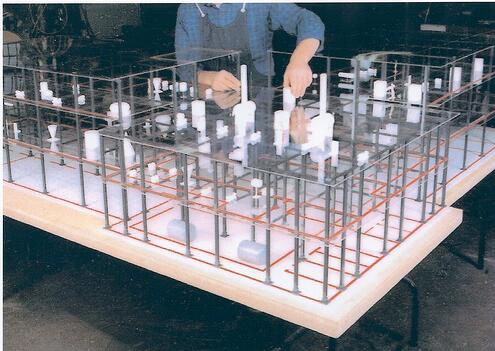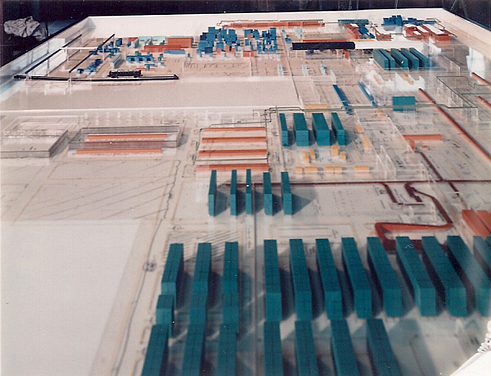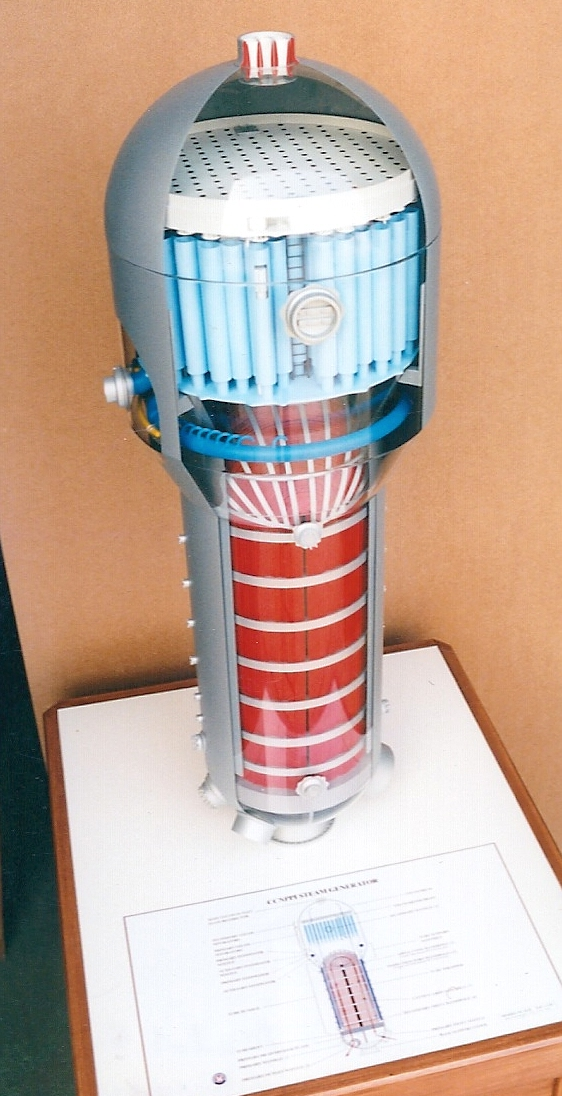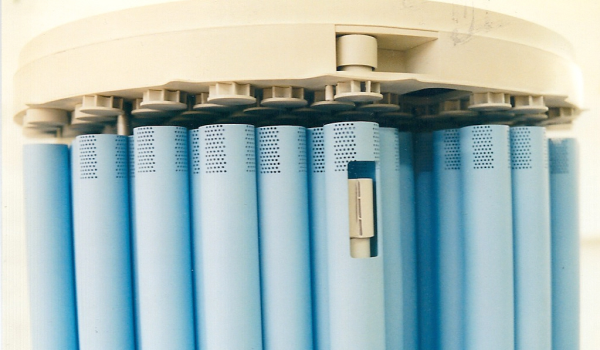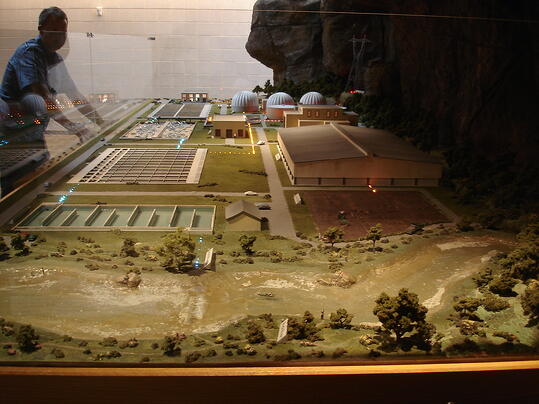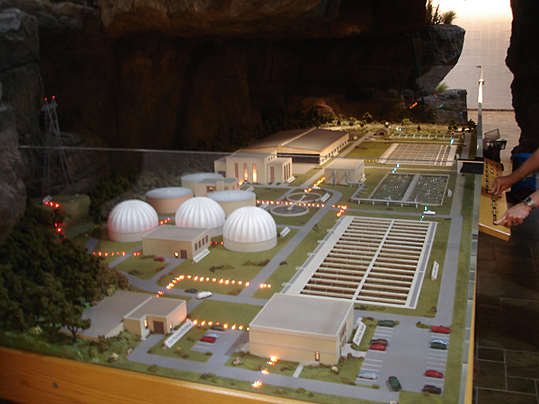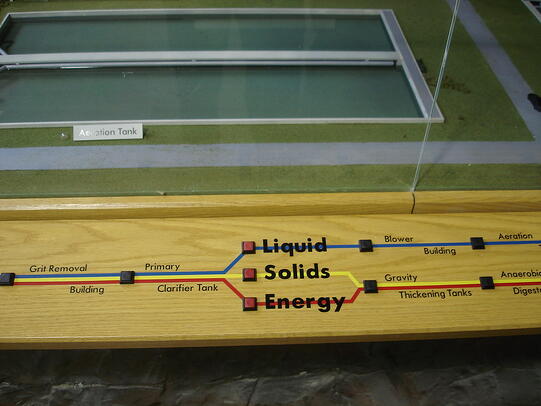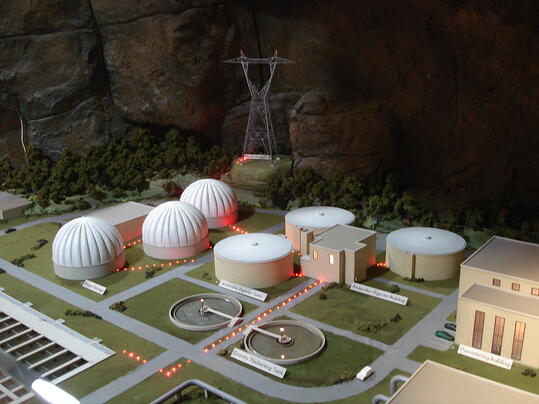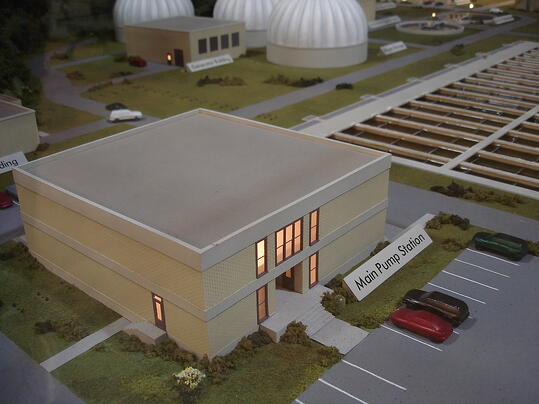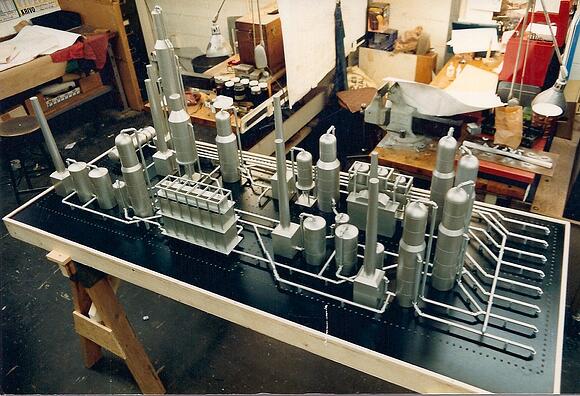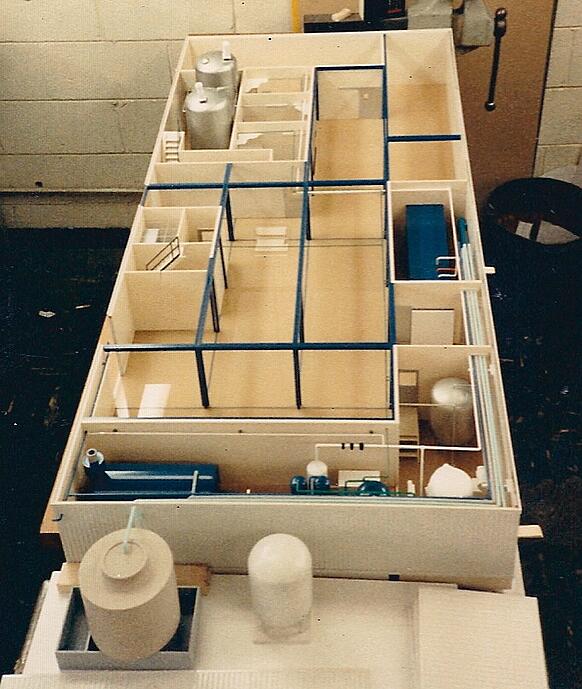UOP had an investor meeting coming up and wanted to make a great impression showing the advantages of their prefabricated gas processing plant. UOP is the only manufacturer that makes a prefab one and it consists primarily of seven skids that can be trucked to the site. They also wanted to use this model for sales presentations and tradeshows.
The UOP advantages are that the prefab gas processing plant can be made much more cost effectively in advance in a factory and there is little final assembly once the seven skids are shipped to the client's site. Furthermore quality control in the factory is much easier to manage than in the field. UOP's competitors build gas processing plants on site which takes far longer and their construction time is much more exposed to weather delays.

UOP prefabricated gas processing plant 1:48 scale model 25" long X 25" wide.
To have a real impact with investors and potential clients UOP wanted them to easily envision the prefabrication concept and how it went together. If they could pick up each of the seven skids to assemble or disassemble them by hand that would be very engaging and memorable. Furthermore clients would be able to see the key components in each skid. This is an effective way to relate to what each skid does and where it goes.
The model makes for quicker and easier comprehension of the entire plant than walking through the real one. Furthermore the real prefabricated gas processing plant is too big to take to a tradeshow (or potential client) and most potential clients are not located near one of the installed prefabricated gas processing plants.
What were the keys to getting this model fabricated to meet UOP's short deadline and to be as effective as possible in generating sales?
(1) Choose the right model maker.
Hire a professional model making firm with experience - in this case one that makes process models for heavy industry like oil, gas and nuclear models. This firm would know where to get the special materials necessary and have the expertise to help design and fabricate the model in about four weeks. For this model UOP hired Model Builders, Inc. in Chicago.
(2) Provide the information the model maker needs to build from right away.
UOP drawings were needed to build from and they were needed fast. Model Builders, Inc. suggested that only pdfs of some of the drawings were needed. It would have taken more time and expense if the model maker had to get familar with the UOP CAD drawings since it takes a while (often several days) to get familiar with the many CAD assemblies and parts drawings.
The UOP Director of Corporate Communications recognized that the model maker needed the pdfs right away and put the key UOP engineer in Oklahoma in touch with the model maker. That same day the engineer was able to send out all the needed dimensioned drawings as pdfs.
(3) Choose the scale.
The 1:48 scale was the right one for an engaging hands on demonstration and for transport in a personal vehicle if necessary. Furthermore a scaled flatbed truck was put on the model to help the viewer get a clearer idea of how big the skids were by comparison.
(4) Determine the level of detail.
One of the things about models is that viewers are often attracted to them when they are highly detailed. The details draw them in. With this model even the UOP designer was impressed with the detail accuracy. This is particularly helpful to the sales effort when UOP can discuss with potential buyers what each skid does and the component parts that do that.

(5) Engage the viewer in creative ways.
UOP had Model Builders, Inc. make the seven skids as loose units that can be assembled and disassembled by hand on a simple base with a plan view of the site on top. That meant each model skid could be picked up by hand and assembled or disassembled in the appropriate location on a scaled drawing. The drawing was bonded to the top of the 1" thick 25" X 25" base board.

The stairway next to the right hand and the crosswalk next to the left finger are each connected with magnets for quick and easy assembly.
(6) Use durable materials.
ABS plastic is a very durable material and is the primary material used in this model. Futhermore the bonding liquid chemically welds the parts together.
In contrast acrylic is brittle and sometimes cracks or breaks. Vibrations during shipping and handling, below-zero temperatures and other adverse conditions could cause breakage or the acrylic glue joints could come apart.
(7) Make the model easy to pack and unpack.
The cutouts in the thick foam make packing and protecting the parts from damage simple.

UOP gas processing plant model case.
The flat base with plan view is below the parts seen here. The truck is in the silver box.
How effective was the model at the investor's meeting? It was so effective UOP decided to order a second one to keep at the home office for potential customer presentations.
Model Builders, Inc. is known for helping manufacturers, industrial designers, institutions and individuals go from idea to reality. Take the next step by contacting us at Model Builders, Inc., 773-586-6500 or info@modelbuilders.net .

